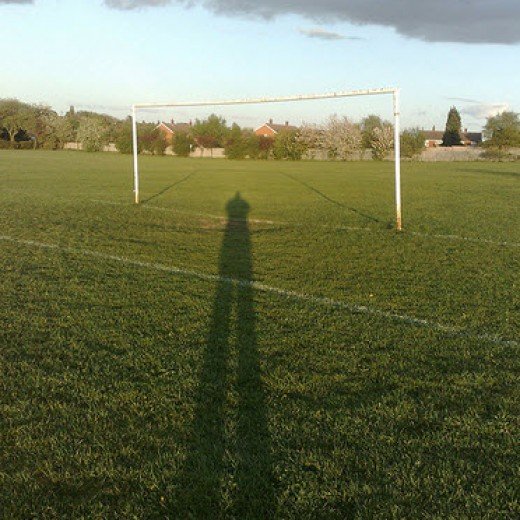Use Setting and Background to Meet Reader Expectations
 Welcome to the next installment of craft posts by monthly guest columnist, Kay Keppler. Today she’ll share about setting and its important. You can contact Kay through the Writer’s Fun Zone or at kaykeppler@yahoo.com to ask questions, suggest topics, or tell her she’s off her rocker. (She let me say that!)
Welcome to the next installment of craft posts by monthly guest columnist, Kay Keppler. Today she’ll share about setting and its important. You can contact Kay through the Writer’s Fun Zone or at kaykeppler@yahoo.com to ask questions, suggest topics, or tell her she’s off her rocker. (She let me say that!)
***
Setting should never be an afterthought in your story planning. Where you place your characters—and how you describe their geography, time period, and other setting elements—can expand or clarify themes, build story unity, tighten plot structure, intensify suspense, motivate and explain character, and intensify reader involvement.
Intensify reader involvement
If you write genre fiction, how you set your stories plays a major role in whether or not you meet reader expectations.
For example, by reading Robert B. Parker, many mystery aficionados feel they know Boston. When they come back to other books by Parker, they expect to slide into familiar territory. Parker meets these readers’ expectations. But Bostonians might howl if his characters drove the wrong way down a one-way street. He has intensified reader involvement to the extent that they’d feel cheated if he made this kind of mistake (which of course, he doesn’t).
Let’s see how that works in other genres.
First, Westerns. Perhaps the oldest genre form, Westerns use isolation to convey the idea of lawlessness, as well as the expansiveness of the frontier. Desperadoes take over a town, until the lone man wearing the bright star steps into the dusty street, outdraws the villains, and re-establishes order. These heroic men believed that right made might and justice would prevail.
From the books of Louis L’Amour to television shows such as Maverick, Rawhide, and Gunsmoke, readers expect these elements. But was that how the West was? Almost certainly not. Probably more men were shot in the back than shot in fair fights. Justice did not necessarily prevail, and might usually made right.
But if you’re writing a Western, you will need to get the conventions right, or your readers will be disappointed. As Jack Bickham says, you need to be accurate to the myth of the genre, not the actual truth.
Romances, fiction’s biggest sellers. Twenty or thirty years ago, romance novels were often set in exotic places—the better to woo you, my dear. Because the driving force of the romance novel is the emotional arc of the characters, these settings were often described in heavy detail to reflect the ups and downs of the relationship.
Today, romances do not rely nearly as much on idealized romantic settings. Subgenres featuring paranormal creatures have surged in sales. Whatever kind of romance you write, the setting must fully reflect the subgenre and its characters. Without that, readers will reject your premise.
Mystery and suspense. These stories might have a technical, medical, or other specialized setting, but background isn’t usually why people read this genre. People like mysteries for the story’s puzzle and suspense for the dire physical danger the characters get themselves into. Setting is usually secondary.
Therefore in mystery and suspense, plot rules. Character follows. Setting comes last. A crisp style underscores the tension and movement of these books. The emotional background—compared to romance novels—should be chilly.
Historicals. Be prepared to provide vast background content, heavy doses of period minutia, and a plot that’s deeply intertwined with the setting. For example, you’ll need to include details such as the cost of rouge or a bale of cotton, as well as a setting and background that reflects the broader historical issues of the day.
Think Gone with the Wind. Margaret Mitchell might not have gotten all (or any) of the details correct back in 1935 when she wrote it, but it’s a great example of an enduring historical novel. And if she were writing it today, her publishers would demand a high standard of accuracy.
Science fiction. Settings in science fiction can be handled in many ways because science fiction plots do not require specific elements, such as suspense or romance. However, this genre is based on solid scientific data. The background you do include will have to be accurate.
Moreover, to meet reader expectations and intensify their involvement in your story, your plot must grow from the setting—it should be the basis for the problem or quest. And that can require a great deal of research.
Meeting genre expectations helps sales
To market your book, look at other published work in the genre you’re writing. Don’t focus too heavily on setting specifics. Focus instead on generalities. How do several successful authors handle setting in your genre? In this way you can exercise your originality within the rules of the genre and meet both reader—and publisher—expectations.
—
 Kay Keppler (www.kaykeppler.com) is an author (Zero Gravity Outcasts, Betting on Hope, Loving Lucy) and editor of fiction and nonfiction (Asylum Harbor, Pragmatic Guide to Sass) who lives in northern California. Thanks to Jack M. Bickham and his book Setting (Writer’s Digest Books) for help with this column. Contact her here or at kaykeppler@yahoo.com to ask questions, suggest topics, or if you prefer, complain.
Kay Keppler (www.kaykeppler.com) is an author (Zero Gravity Outcasts, Betting on Hope, Loving Lucy) and editor of fiction and nonfiction (Asylum Harbor, Pragmatic Guide to Sass) who lives in northern California. Thanks to Jack M. Bickham and his book Setting (Writer’s Digest Books) for help with this column. Contact her here or at kaykeppler@yahoo.com to ask questions, suggest topics, or if you prefer, complain.







Hey, Kay, awesome post! It just goes to show you when setting becomes an important piece of the story. I write a time travel series for kids, and each back has a lot of historical information, so you can bet I research until I’ve got the right feeling and cultural flavor for an adventure. Cheers!
Thanks, Sharon! Setting is important for any kind of story, and kids are sticklers for details. Sounds like you’re giving them a great experience with your time travel series!
[…] Use Setting and Background to Meet Reader Expectations — Writer’s Fun Zone (Beth Barany) […]
And for Fantasy, the author needs to be consistent and think through the “rules” of her/his universe so that readers feel they can trust the setting and allow themselves to be drawn in.
That’s so true! Fantasy writers really have to be consistent, maybe more so than writers who place their books in the everyday world. In the everyday world, readers already understand basic rules–the sun rises in the east, water runs downhill. But in fantasy, readers have have only the author to trust. So those fantasy settings need to stay consistent if the author wants to keep the readers’ trust and draw them into the story.